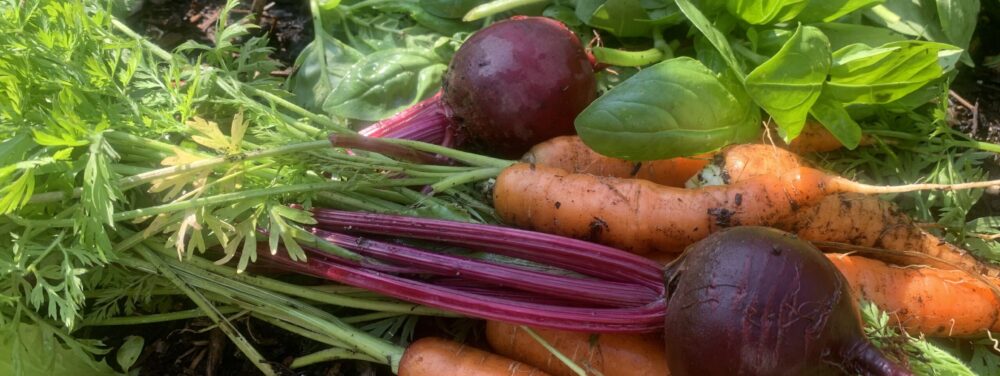You have friends, and your vegetable plants have friends, too. Some plants do better when they grow close together. Gardeners call it companion planting—the strategic placement of different plants in the garden. Companion planting can improve the growth and health of your vegetables, and help you plan your vegetable garden layout. Read this post to learn how companion planting can help your food garden.
Say Good Bye To Pests
Probably the most frustrating part of growing my own food is when our backyard bugs and slugs eat more than their share of our growing vegetables.
The good news is some plants keep certain pests away. Basil acts as a natural repellent to keep insects away from tomato plants. Marigolds keep nematodes (worms) from destroying vegetables.

Some plants act like traps. The trap plants attract pests, keeping the unwanted pests away from your vegetables. I plant nasturtiums to keep aphids off our vegetables.
Last year I planted marigolds and nasturtiums throughout my vegetable garden. I had less insect damage on our food and a more colourful garden than previous years.
Eat Better Tasting Vegetables
Companion planting can enhance the flavour of some vegetables.
Plant carrots and onions together to improve the flavour of both.
Some believe that nasturtiums can help improve the taste of cucumbers. And borage enhances the flavour of tomatoes.

Help Your Vegetables Support Each Other
When companion planting, think about what your vegetables need as they grow and how they can help each other with those needs.
Tall, sun-loving plants can provide shade for vegetables that don’t like the hot, summer sun. Planting tall sunflowers next to lettuce or spinach can protect these leafy greens from the heat of the summer (lettuce and spinach like cooler temperatures).

Tall plants can also support vegetables that need to climb (like peas and beans).
Plants that sprawl on the ground can help protect the soil and act as a growing mulch to keep moisture in the soil.
Indigenous people have taught us about the “Three Sisters” way of companion planting corn, beans, and squash. The corn provides a stalk for the beans to climb as they grow. As the squash spreads across the ground, it prevents weed growth and maintains soil moisture. And the beans add nitrogen back into the soil, benefiting the corn and the squash.
But Wait…Do Enemy Plants Exist?
Yes, certain plants struggle when grown close together. I call them enemy plants.
Onions will stunt the growth of peas. So don’t grow peas and onions next to each other.
And although carrots and dill are good together on our dinner plates, carrots and dill don’t thrive when grown together. I made the mistake of planting carrots and dill together last summer. My carrots did well, and my dill was an embarrassment.
Tomatoes and potatoes are both from the nightshade family. Even though they are family, they shouldn’t be grown together because blight can affect both plants. Blight is a disease that can damage the vegetable crops and spread from one crop to another. To protect your potatoes and tomatoes, grow them away from each other.
Luckily, many vegetables grow well near other vegetables. When you know why companion planting is helpful, you can better plan your garden and help your vegetable plants thrive. If you want to learn more about which vegetables grow well together, West Coast Seeds has an excellent companion planting guide.


